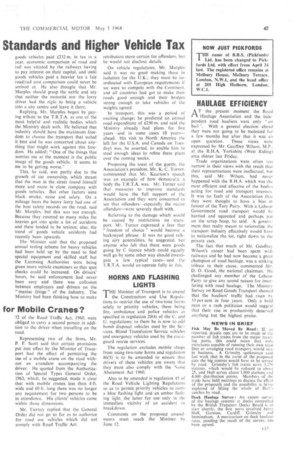How Many Attendants for Mobile Craties?
Page 48

Page 49

If you've noticed an error in this article please click here to report it so we can fix it.
WHEN three firms were summoned at Nottingham Magistrates Court on Monday for allowing a heavy locomotive to be driven on the highway without two persons in attendance, the chairman of the bench, Mr. J. G. MeMeeking, said: "This case is so complicated legally and of such importance for the industry and to hirers of cranes that we propose to reserve judgment until May 11."
The companies involved were Bowmer and Kirkland (Plant) Ltd.; J. S. Burnett Ltd.; and Dennis Green and Harry Mover, summoned separately as partners in Speed Electrics. All pleaded not guilty.
Mr. T. R. B. Tiernay, prosecuting, said it was alleged that mobile cranes owned by the three firms had been driven on the road on different dates with only one person in attendance. They were classed as heavy locomotives and under Section 72 of the Road Traffic Act, 1960, were obliged to carry a second persOn in addition to the driver when travelling on the road.
Representing two of the firms, Mr. P. F. Scott said that certain provisions put into effect by the Minister of Transport had the effect of permitting the use of a mobile crane on the road without an attendant accompanying the driver. He quoted from the Authorization of Special Types General Order, 1963, which, he suggested, made it clear that with mobile cranes less than 8 ft. wide and 60 ft. longthere was no longer any requirement for two persons to be in attendance. His clients' vehicles came within those dimensions.
Mr. Tiernay replied that the General Order did not go so far as to authorize for road use vehicles which did not comply with Road Traffic Act,




















































































































































































































































